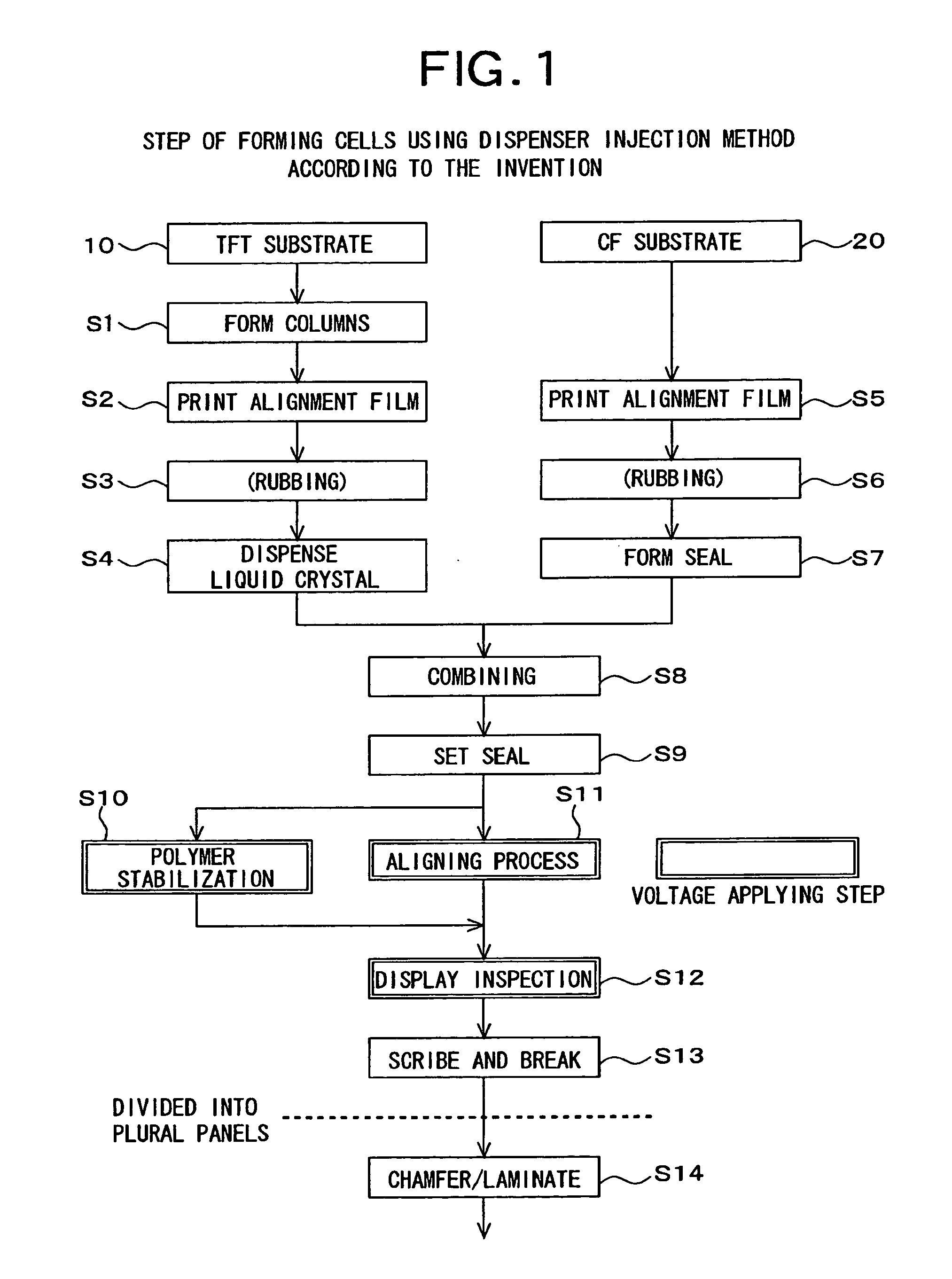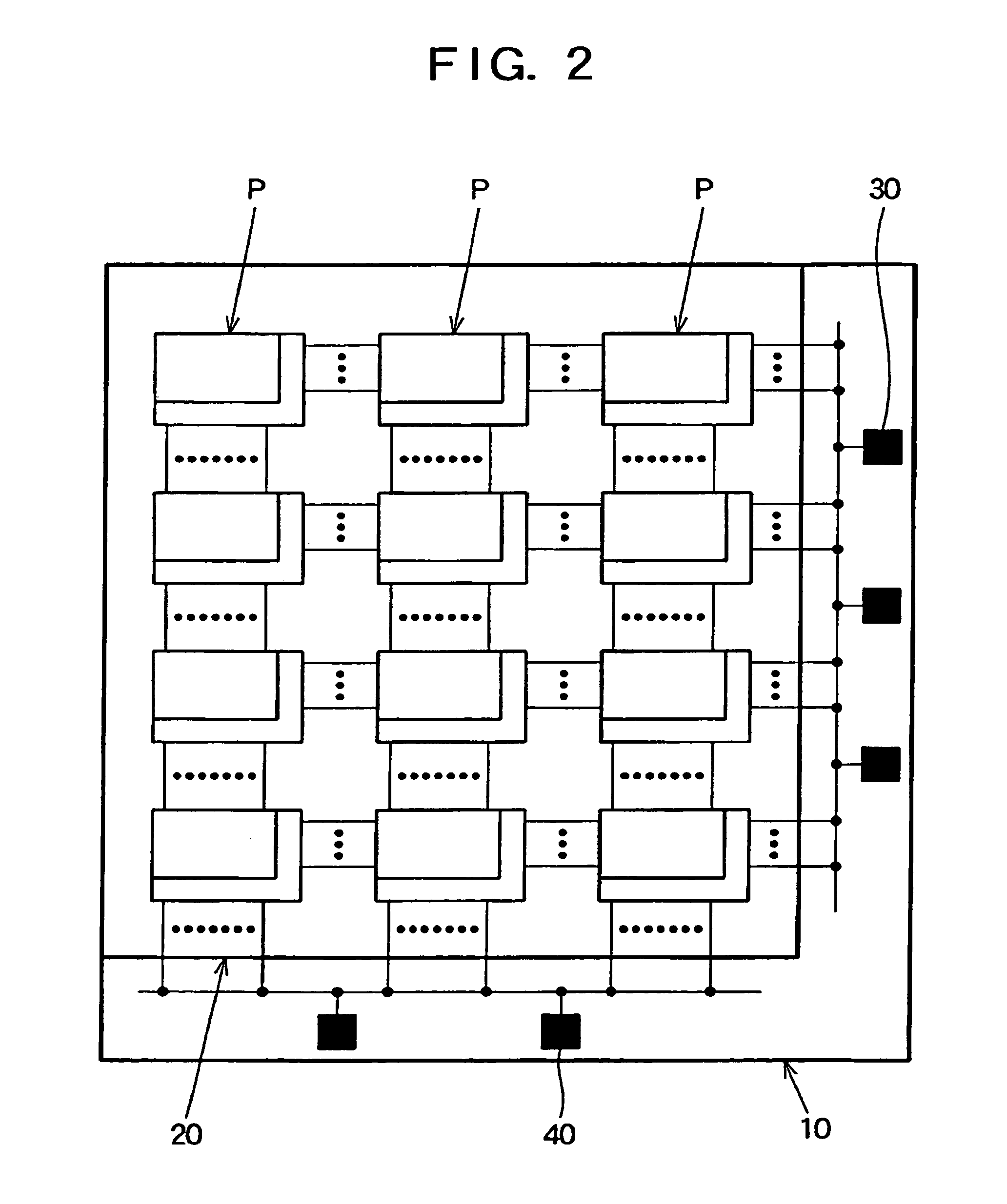Method of manufacturing liquid crystal display panels
a technology liquid crystal display panels, which is applied in the direction of instruments, electrical appliances, optics, etc., can solve the problems of reducing production efficiency, increasing manufacturing costs, and complicated operation of transporting the multiplicity of liquid crystal display panels to and from inspection apparatuses
- Summary
- Abstract
- Description
- Claims
- Application Information
AI Technical Summary
Benefits of technology
Problems solved by technology
Method used
Image
Examples
Embodiment Construction
[0033]A method of manufacturing liquid crystal display panels according to an embodiment of the invention will now be described with reference to FIGS. 1 and 2. FIG. 1 is a flow chart showing steps of the method of manufacturing liquid crystal display panels in the present embodiment of the invention. For example, a glass substrate that is a transparent insulated substrate is used as a substrate 10 to serve as TFT substrates (a mother glass for TFT substrates) in FIG. 1. A multiplicity of TFT substrate regions are formed on the substrate 10 to serve as TFT substrates. A plurality of scan bus lines and a plurality of signal bus lines are provided in each of the TFT substrate regions such that they intersect each other with an insulation film interposed therebetween. A TFT (thin film transistor), a pixel electrode, and a storage capacitor electrode are formed in each of pixel regions which are defined by the bus lines. The TFTs function as switching elements for applying a gray scale ...
PUM
| Property | Measurement | Unit |
|---|---|---|
| voltage | aaaaa | aaaaa |
| sizes | aaaaa | aaaaa |
| angle | aaaaa | aaaaa |
Abstract
Description
Claims
Application Information
 Login to View More
Login to View More - R&D
- Intellectual Property
- Life Sciences
- Materials
- Tech Scout
- Unparalleled Data Quality
- Higher Quality Content
- 60% Fewer Hallucinations
Browse by: Latest US Patents, China's latest patents, Technical Efficacy Thesaurus, Application Domain, Technology Topic, Popular Technical Reports.
© 2025 PatSnap. All rights reserved.Legal|Privacy policy|Modern Slavery Act Transparency Statement|Sitemap|About US| Contact US: help@patsnap.com



